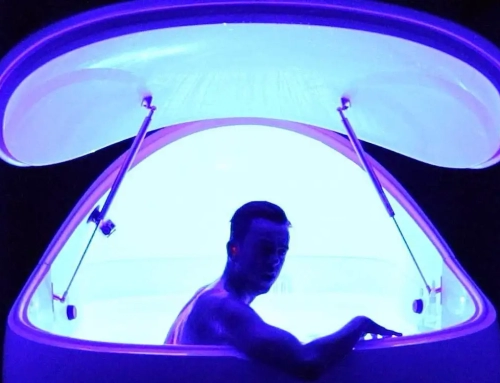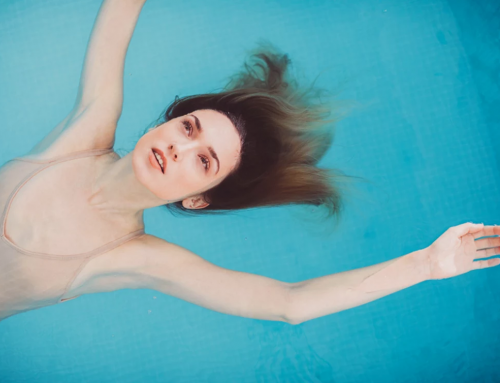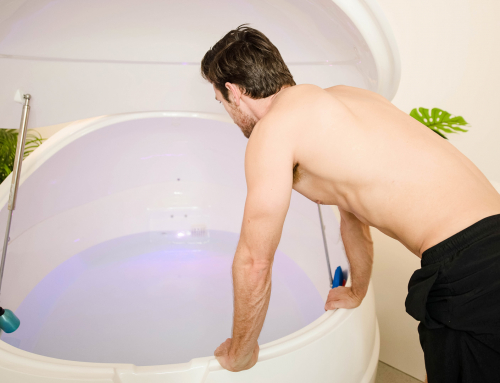Post-Floatation Review by Ashley Laderer:
What the hell am I gonna do in a pitch black chamber for an hour with literally nothing but myself and 10 inches of water?
This is all I could think right after committing to an hour-long sensory deprivation session. I’m fine with being alone — but without my iPhone, a book, or vision? What was I going to do? How would I shut my mind off? Anytime I try to meditate, I hyperventilate, and I’m not a fan of stillness or deep breathing exercises. I found myself becoming anxious at the thought of … something that is supposed to bring me complete and utter relaxation. The irony.
What is Sensory Deprivation?
Floating, Sensory Deprivation, or Restricted Environmental Stimulation Therapy (REST) — same thing, different names — are scientifically proven to have both mental and physical health benefits. Research done for this alternative treatment is extremely promising.
How does floating work? Well, it activates the parasympathetic nervous system, which slows the heart rate and helps us get into relaxation mode. It also lowers blood pressure as well as levels of cortisol (a stress hormone). Studies have shown that floating is a great complementary treatment for generalized anxiety disorder. Anxiety sufferers in one study showed significant improvement in anxiety symptoms, mood, and sleep regulation after 12 sessions. Another study suggested floating can result in short term relief from PTSD, Agoraphobia, and social anxiety.
So, while I was admittedly a little scared to float at first, I couldn’t ignore all the science backing up the benefits of sensory deprivation. The more I read up, the more excited I became.
Starting the Session
My appointment was scheduled for a Saturday afternoon at Lift Next Level Floats in Huntington, New York. When I arrived, I was given a quick rundown by manager Adriene Passannante before I watched a short video that would tell me everything I needed to know before my float. I was pleased to hear there were buttons conveniently located on the inside of the tank to turn the lights on — just in case I freaked out. By the time I was shown to my room, I was itching to get in the tank, but I had to shower to get oils off my hair and skin first.
When I finally plopped myself into the tank, I immediately floated — no effort necessary. I couldn’t help but smile. It was a phenomenon I’d never experienced before, as I can’t float in pool or salty ocean water for the life of me. I thanked the 1000 pounds of epsom salt in the tank for keeping me up. The water felt perfect — because it’s kept right around human body temperature. They say for this reason, it becomes easy to lose track of where the body ends and the water begins, adding to the sense-free experience. Tiny lights resembling colorful stars lit up the ceiling of the tank, and zen music played at the perfect volume.
Beginning to Relax
With my ears submerged and earplugs in, my breath began to sound like gentle ocean waves, coming in and out of shore. I tried my best to keep my inhales long and my exhales longer while I struggled to find a position for my arms to feel natural and comfortable. Arms at my side, palms up. Arms at my side, palms down. Hands folded across my belly. Hands folded beneath my head. I ended up feeling best with my arms up overhead, and settled into the weightlessness.
I am a mermaid. I thought. This is what it feels like to be a mermaid. For a moment I even zipped my legs together and pretended to have fins before trying to settle into stillness. The lights and music shut off at about the 7 minute mark, as Adrienne had warned me — but it was startling! I freaked out a bit as I realized I was all in, but I reminded myself I could easily turn the light on or even open the door if I really wanted to. To get in the zone, instead of trying to shut my brain off, I tried thinking of relaxing happy places I have been to. I thought of lying down on a paddleboard in the Pacific Ocean off the coast of Honolulu, and wading in the Mediterranean Sea in Barcelona. And then…
I suppose I entered the portion of the session where my normal Alpha and Beta brain waves transformed into Theta waves. These waves are usually only present right before falling asleep or waking up, which makes sense because I felt as though I was going in and out of some sort of consciousness, like how I feel when I’m just drifting off to sleep. I even felt like I was having little snippets of dreams! No longer was I making a super-conscious effort to be relaxed — I just was.
Basically, being in the Theta state helps us reach a level of calmness that we don’t really experience otherwise during our waking hours. Theta brain waves are much slower than Alpha and Beta waves. These slower waves allow for — you guessed it — deeper relaxation and reduced stress. When the brain is in this state, benefits go beyond stress relief. When the brain’s this relaxed, it allows your body to heal from physical pains. Not to mention, the floating and anti-gravity your body is experiencing takes pressure off your joints and muscles!
Slipping Back into Consciousness
When the music and lights came back on I couldn’t believe an hour had gone by. I was sleepy and relaxed and didn’t want to come out of my little mermaid cave. I stepped out of the tank and slowly headed towards the shower, but then turned around and stepped right back into the water for just a few more seconds of floating before the filter kicked in, signifying my session was definitely over. Ugh!
After my float, I spoke with Passannante about her own experiences with floating.
“Ever since I’ve incorporated a regular floating practice into my life (once a week) I’ve noticed my sleep patterns have changed quite a bit. I’ve suffered from insomnia for the last year and the nights I float, I have such deep and uninterrupted sleep. My mind doesn’t spin out (especially at night) the way it used to,” she said.
I also spoke with Lift co-owner, Gina Antioco, who is happy that so many people are focusing on wellness.
“People are shifting away from unhealthy habits and I think it’s wonderful! Antioco said. “It’s no secret that people are ditching happy hour for Friday night yoga, and choosing healthier eating habits as it becomes more clear to us where our food comes from and how it is being treated — and floating is just a part of the journey to healthier living.”
Floating into the Future
Antioco is committed to educating people, including skeptics, about the science and credibility behind floating. She even told me that some insurance carriers in the US are starting to cover floatation sessions. “Once [skeptics] hear that, it tends to give credibility to this relatively new industry and make people more receptive to the idea that the practice of floatation really does have the power to do amazing things,” she said.
Now that I’ve experienced sensory deprivation, I don’t doubt the power of floatation at all. I’m so excited for more research to be done surrounding the topic and its effect on mental health — and even more excited for my next session!





